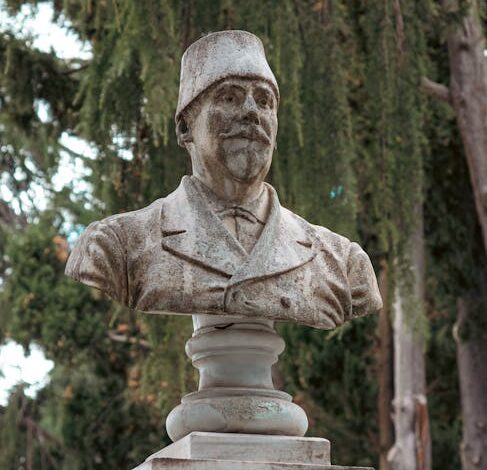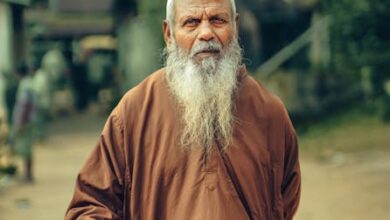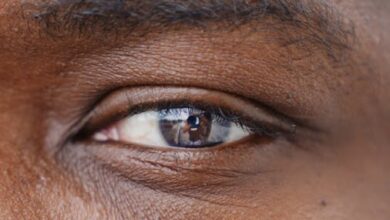Inside the Contentious World of Luigi Mangione Supporters

Inside the Contentious World of Luigi Mangione Supporters
Estimated Reading Time: 6-7 minutes
- Luigi Mangione’s support base is fundamentally divided between advocates for healthcare reform and those focused on proving his personal innocence.
- These two factions possess distinct goals, methodologies, and emotional drivers, leading to significant internal tensions within the movement.
- The digital landscape serves as both a unifying and fragmenting force, amplifying both support and internal disagreements, requiring sophisticated communication strategies.
- Modern social movements, exemplified by Mangione’s case, frequently grapple with the challenge of simultaneously pursuing individual justice and broader systemic reform.
- Effective advocacy necessitates clearly defined objectives, fostering open dialogue, and strategically communicating intersectional goals to maintain coherence and maximize impact.
- The Divided Factions: Reform vs. Innocence
- Navigating the Digital Battleground
- The Broader Implications for Social Movements
- Actionable Steps for Navigating Complex Advocacy
- Conclusion
- FAQ
The name Luigi Mangione has become a flashpoint, igniting fervent debate and drawing a complex spectrum of support. At the heart of a high-profile legal battle, Mangione has inadvertently become a figurehead for causes far larger than his personal predicament. This article delves into the intricate and often contradictory landscape of his supporters, exploring the divisions, the motivations, and the broader implications for social advocacy.
From the impassioned calls for systemic change to the unwavering belief in his individual innocence, Mangione’s base is anything but monolithic. Understanding these factions is key to grasping the full scope of the public discourse surrounding his case, revealing a movement deeply divided by its primary objectives.
The Divided Factions: Reform vs. Innocence
The coalition rallying behind Luigi Mangione is characterized by a fundamental schism. On one side are those who view his situation as a stark illustration of deeper societal flaws, primarily within the healthcare system. On the other are individuals convinced of his personal exoneration, seeing the legal proceedings as a miscarriage of justice.
As Luigi Mangione is being tried legally and in the court of public opinion, tensions are growing between his supporters pushing health care reform and those who believe he is innocent. This statement captures the very essence of the internal strife that defines this movement. The goals, methodologies, and even the emotional tenor of these two groups diverge significantly, yet they both orbit the central figure of Luigi Mangione.
The Healthcare Reform Advocates
For a significant portion of Mangione’s supporters, his case transcends individual guilt or innocence. They see his struggles as a microcosm of a failing healthcare system, burdened by prohibitive costs, inaccessible services, and a perceived lack of compassion. Their advocacy is not solely about Mangione himself, but about leveraging his story to ignite a broader movement for change.
These activists are often driven by personal experiences with medical debt, insurance denials, or inadequate treatment. They utilize Mangione’s platform to highlight systemic issues, demand policy shifts, and advocate for universal access or more equitable healthcare models. Their messaging often focuses on the societal pressures that may have contributed to Mangione’s alleged actions, framing him as a victim of circumstances rather than a perpetrator.
Their banners often read “Healthcare is a Human Right” or “No One Left Behind,” using Mangione’s plight as a powerful narrative to rally public support for legislative reforms. For them, his trial is an opportunity to put the entire healthcare apparatus on trial, hoping to galvanize enough public outcry to force meaningful change.
The Innocence Crusaders
Conversely, another powerful faction of Mangione’s supporters is singularly focused on proving his innocence. For them, the legal process itself is flawed, the evidence questionable, and the public’s judgment premature. Their belief in Mangione’s character, their skepticism of the official narrative, or their conviction in the principle of ‘innocent until proven guilty’ drives their efforts.
These supporters pore over court documents, dissect witness testimonies, and champion alternative theories. They organize demonstrations to protest perceived injustices in the judicial system and launch online campaigns to discredit what they see as a biased media narrative. Their primary objective is the complete exoneration of Luigi Mangione, believing that securing his freedom is the ultimate form of justice.
Their messaging emphasizes due process, the presumption of innocence, and often highlights Mangione’s past contributions or character references. They believe that if the truth were fully known, he would be cleared of all charges. The concept of systemic reform takes a backseat to the immediate, pressing need to secure justice for the individual they support.
Navigating the Digital Battleground
The internet has become the primary arena where these divergent narratives clash and coalesce. Social media platforms, dedicated forums, and crowdfunding sites serve as both organizing hubs and battlegrounds for Mangione’s supporters. The sheer speed and reach of digital communication amplify both unity and division within the movement.
Online, the reform advocates share statistics on healthcare bankruptcies and personal anecdotes of medical hardship, linking them directly to Mangione’s case. They use hashtags that trend towards broader policy discussions. Meanwhile, the innocence crusaders meticulously post legal analyses, video clips they believe show discrepancies, and calls for investigative journalism, often creating petitions for his release or retrial.
This digital landscape, while fostering unprecedented levels of global coordination, also exacerbates the tensions between the factions. A viral post by a reform advocate might be seen as diluting the core message of innocence by the other group, leading to internal criticisms and accusations of shifting focus. Conversely, a purely innocence-focused campaign might be criticized for ignoring the ‘bigger picture’ by those advocating for systemic change. Echo chambers form, and bridging these gaps online becomes an even greater challenge.
The Broader Implications for Social Movements
The case of Luigi Mangione and the complexities of his support base offer valuable insights into the dynamics of modern social movements. When an individual’s personal struggle becomes emblematic of a larger societal issue, the potential for both powerful advocacy and internal fragmentation dramatically increases.
This situation underscores a recurring challenge: how to simultaneously fight for individual justice and systemic reform. Movements that manage to harmoniously integrate both aspects often achieve greater public resonance and legislative impact. However, when the focus becomes too diffused, or when internal disagreements overshadow the core mission, the movement risks losing its coherence and efficacy.
The Mangione case demonstrates that passion, while a powerful motivator, needs clear strategic direction. Without it, even the most dedicated supporters can find themselves working at cross-purposes, inadvertently weakening the overall impact they wish to achieve. This delicate balance requires thoughtful leadership and a clear understanding of the diverse motivations fueling the support base.
Real-World Parallel: The “Justice for X” Dilemma
Consider the hypothetical case of “Community A,” which rallied around a local teacher, Ms. Evelyn, accused of embezzlement. Initial support was purely focused on proving her innocence, with neighbors and parents forming ‘Free Evelyn’ committees. As the trial progressed, however, it became clear that Ms. Evelyn had been struggling with overwhelming medical debt due to a family illness, which was revealed as a potential motive. This shifted a significant portion of her support base to also advocate for local healthcare funding reforms and better access to social services. While some remained solely focused on her innocence, the parallel push for reform gained momentum, illustrating how personal tragedies can catalyze broader social advocacy, sometimes creating internal friction over primary objectives.
Actionable Steps for Navigating Complex Advocacy
For those involved in or observing movements like that surrounding Luigi Mangione, understanding and navigating these complexities is crucial. Here are three actionable steps:
- Clearly Define Primary and Secondary Objectives: For any movement rallying around a central figure, it’s vital to establish whether the primary goal is individual exoneration, systemic reform, or both. If both, clearly articulate how they intersect and reinforce each other. A “mission statement” that acknowledges both can help unify diverse supporters and provide a common compass.
- Foster Open Dialogue and Respectful Debate: Internal disagreements are natural. Create platforms—both online and offline—for supporters to discuss their differing priorities without resorting to personal attacks. Acknowledging that different paths can lead to a shared vision of justice can help bridge divides. Understanding diverse motivations strengthens the collective rather than weakens it.
- Strategically Communicate Intersectional Goals: If a movement aims for both individual justice and broader reform, its communication strategy must be sophisticated. Messages should clearly link the personal struggle to the systemic issue, showing how one illuminates the other. This ensures that neither objective is undermined, and both gain traction with different segments of the public. Tailor messages for different audiences while maintaining overall consistency.
Conclusion
The world of Luigi Mangione’s supporters is a microcosm of the challenges and opportunities inherent in modern social movements. It showcases the immense power of collective action, driven by deeply held beliefs and profound emotional investment. Yet, it also highlights the inherent tensions when individual justice intersects with the pursuit of systemic change.
The dynamic interplay between those seeking Mangione’s personal vindication and those leveraging his case for broader healthcare reform is a testament to the intricate nature of advocacy. As the legal proceedings unfold and public discourse continues, the evolution of this contentious world will undoubtedly offer further lessons on unity, division, and the enduring quest for justice in its many forms.
What’s Your Perspective?
The Luigi Mangione case brings critical issues to the forefront. How do you believe movements can best balance individual advocacy with calls for systemic change? Share your insights and join the conversation in the comments below, or explore resources on health policy reform and judicial transparency to deepen your understanding.
Frequently Asked Questions
A: Luigi Mangione’s supporters are primarily divided into two factions: those advocating for systemic healthcare reform using his case as an example, and those singularly focused on proving his personal innocence and securing his exoneration from legal charges.
A: Healthcare reform advocates leverage Mangione’s situation as a microcosm of a failing healthcare system. They use his struggles to highlight issues like prohibitive costs, inaccessible services, and medical debt, advocating for policy shifts and more equitable healthcare models.
A: The “innocence crusaders” are solely focused on demonstrating Luigi Mangione’s innocence. They scrutinize legal documents, challenge official narratives, and protest perceived injustices in the judicial system, believing in his complete exoneration as the ultimate form of justice.
A: The internet serves as both an organizing hub and a battleground, amplifying both unity and division. While it facilitates coordination and broadens reach, it also exacerbates tensions between the different factions through conflicting narratives and echo chambers.
A: Key steps include clearly defining primary and secondary objectives, fostering open dialogue and respectful debate among diverse supporters, and strategically communicating intersectional goals to ensure both individual justice and broader systemic reform are effectively addressed.





